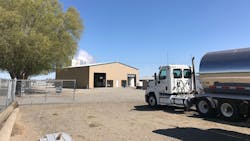Improving Wastewater Treatment Sustainability
In the United States, the Clean Water Act of 1972 ushered in the beginning of a national coordinated effort to address water pollution by funding the construction of sewage treatment plants and regulating contaminants of industrial and municipal discharge into national waterways. One parameter critical for maintaining sustainable waters is pH.
The pH of industrial and municipal wastewater streams tends to drift toward an acidic value, due mostly to waterborne anaerobic microorganisms that generate acidic by-products. These acids, such as hydrogen sulfide (H2S) and small organic acids, emit strong odors that are simultaneously unpleasant for neighboring businesses and residents and highly corrosive to the wastewater collection system infrastructure.
Buffering the pH of industrial and municipal wastewater streams in the alkaline range is one way to reduce odor and corrosion. This is often done by dosing wastewater with sodium hydroxide/caustic soda (NaOH), sodium carbonate (soda ash), or calcium hydroxide (hydrated lime), each with their own set of dangers requiring specific safety measures for their use.
Dangerous Chemicals and Excessive Salinity
Caustic soda is easier to feed and requires less maintenance than other alkalis that typically come in powdered or slurry form. However, caustic soda is extremely dangerous to handle. Even diluted concentrations can cause significant burns to unprotected skin, especially with prolonged contact. Therefore, it must be handled with caution, strictly adhering to containment and safety measures. Lime and soda ash are also strong irritants.
Additionally, caustic soda releases sodium salinity into the environment. To stabilize the pH and to favor the growth of beneficial bacteria, wastewater treatment systems must have an adequate level of alkalinity. Unfortunately, the addition of NaOH releases one ion of sodium (Na+) for every hydroxide ion needed to boost alkalinity. This 1-to-1 ratio of sodium with alkalinity is a serious concern when it is discharged into inland streams or land application systems, as the excessive salinity can leach into soils and affect the viability of area agriculture.
Despite these dangers to both employees and the environment, caustic soda has been the standard treatment, even though a high dose is required to effectively adjust the pH of an acidic wastewater stream.
For example, in pH adjustment testing of a concentrated organic acid wastewater sample, a dose of 10 mL of 50 percent NaOH was required to increase the pH of 1000 mL to 6.1. To reach the goal of an effluent stream with a pH of 7.0, another 0.5 mL of NaOH was added and the pH spiked to 12.5 — a level that is corrosive to skin.
For this reason, caustic soda has been used as a shock dose in sewer lines to kill odor-causing microorganisms in the collection system, however, the treatment is not long-lasting nor long-reaching, and odor tends to return rapidly.
A Safer, ‘Greener,’ Cost-Effective Alternative
One replacement for caustic soda (and soda ash and lime) is magnesium hydroxide (Mg(OH)2).
Magnesium hydroxide is sodium-free, so by using it, the overall sodium levels discharged to the environment can be reduced. It also requires a far lower dose for effective pH adjustment. In the experiment mentioned earlier, a dose of 6 mL of 60 percent Mg(OH)2 was able to achieve a pH of 6.2 — as compared to 10 mL for 50 percent NaOH.
This 40 percent reduction in chemical usage is the primary reason that magnesium hydroxide is so much less expensive on a daily use basis than caustic soda, in addition to safety and environmental benefits. Rather than being detrimental to the soil, the magnesium cation (Mg2+) is a soil nutrient, being the core element in chlorophyll.
Additionally, a slight overdose of Mg(OH)2 from operator error hardly effects the overall wastewater pH, maintaining the health of microorganisms in wastewater. The slow-release nature of magnesium hydroxide allows it to hold hydrogen sulfide in solution for optimal odor and corrosion control performance, delivering both long-term and long-range benefits.
Magnesium hydroxide also assists with solids settling in wastewater treatment by providing coagulation benefits that caustic simply doesn’t. Therefore, it is common that, when adding Mg(OH)2 into the aeration process for nitrification pH control, solids settling in the secondary clarifier is improved, as well as increased percent solids in dewatering of digested sludge. Because of the coagulation from Mg2+, many operators could reduce their dewatering polymer usage after transitioning from caustic to magnesium hydroxide.
Demonstration at Spokane County
The benefits of magnesium hydroxide were recently demonstrated by the Jacobs staff that operate the Spokane County Regional Water Reclamation Facility in Washington State after the replacement of caustic soda.
The Spokane County facility processes eight million gallons per day of wastewater from areas around Spokane Valley and has a National Pollutant Discharge Elimination System (NPDES) permit to discharge to the Spokane River. Spokane County has a membrane bioreactor (MBR) system, which allows for a much smaller footprint than conventional wastewater treatment. This is achieved through replacing large clarifier basins with membranes. The process is microbiologically driven, which means controlling the pH and alkalinity reliably and effectively is critical.
Looking for a safer and more cost-effective alternative to caustic soda, Jacobs performed a trial of magnesium hydroxide for 90 days at the Spokane County facility. During this time, magnesium hydroxide was dosed into the wastewater return activated sludge line using an agitated storage tank and metering pump feed system. The result was a 65 percent reduction in chemical usage (by volume) and a significant reduction in digested sludge volume. Roughly half the amount of digested sludge was produced, which lowered sludge hauling fees substantially.
Before switching to magnesium hydroxide, Jacobs was using approximately 1,400 gallons of 25 percent caustic soda every day to treat the area’s wastewater. Replacing this with approximately 450 gallons per day of magnesium hydroxide resulted in a significant chemical reduction cost savings. Additionally, the change led to a reduced impact on the area’s watershed when the treated wastewater was discharged into the Spokane River.
Jacobs staff observed that centrifuge cake solids had increased by a few percentage points, which halved the amount of dewatered sludge that were hauled after using magnesium hydroxide. These trial results were replicated and consistently observed. Importantly, no changes to the feed rate of their dewatering polymer had occurred — nor any other operational changes in the plant that could otherwise account for the sludge reduction.
This result is due to magnesium hydroxide’s coagulation properties. The cost savings delivered, through lower volumes of chemical used, and less sludge meant that Jacobs could replace its caustic soda with magnesium hydroxide confidently. WW
About the Author: Doug Kelley is a Ph.D. chemist with 29 years of research and development experience in water and wastewater treatment technologies. Kelley graduated from Iowa State University in 1990 with a Doctorate in Inorganic Chemistry. As President of Inland Environmental Resources (IER), he has spearheaded the development of proprietary, safe, environmentally friendly and cost-effective chemical products based on magnesium hydroxide.
Published in WaterWorld magazine, November 2021.




